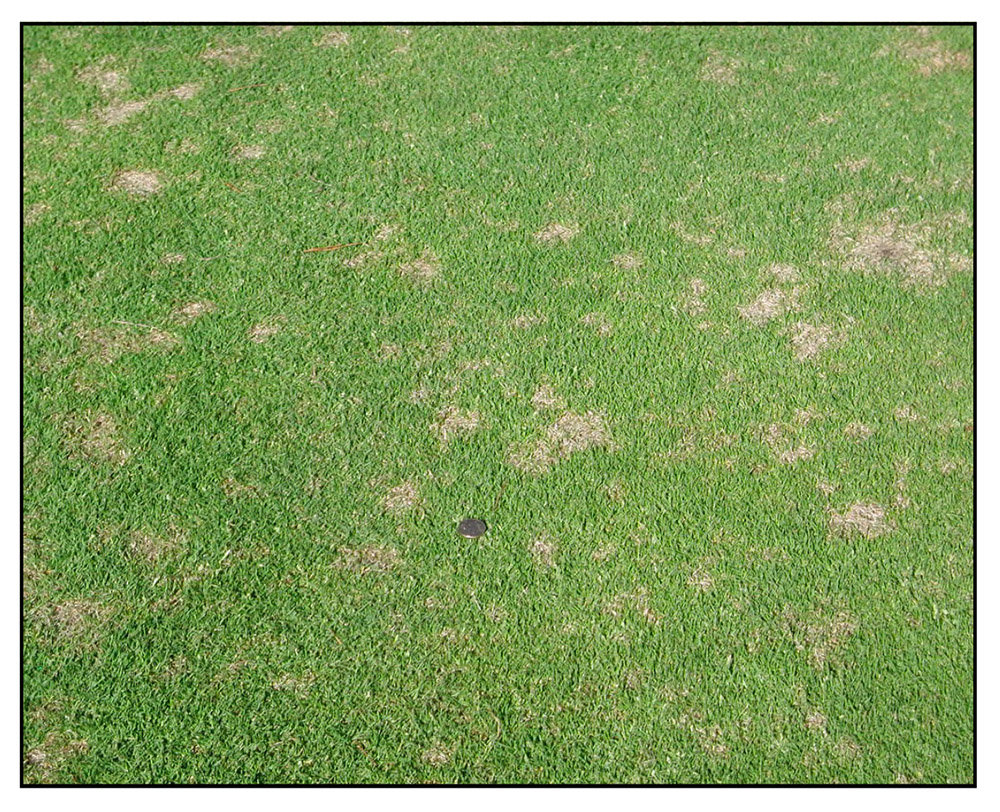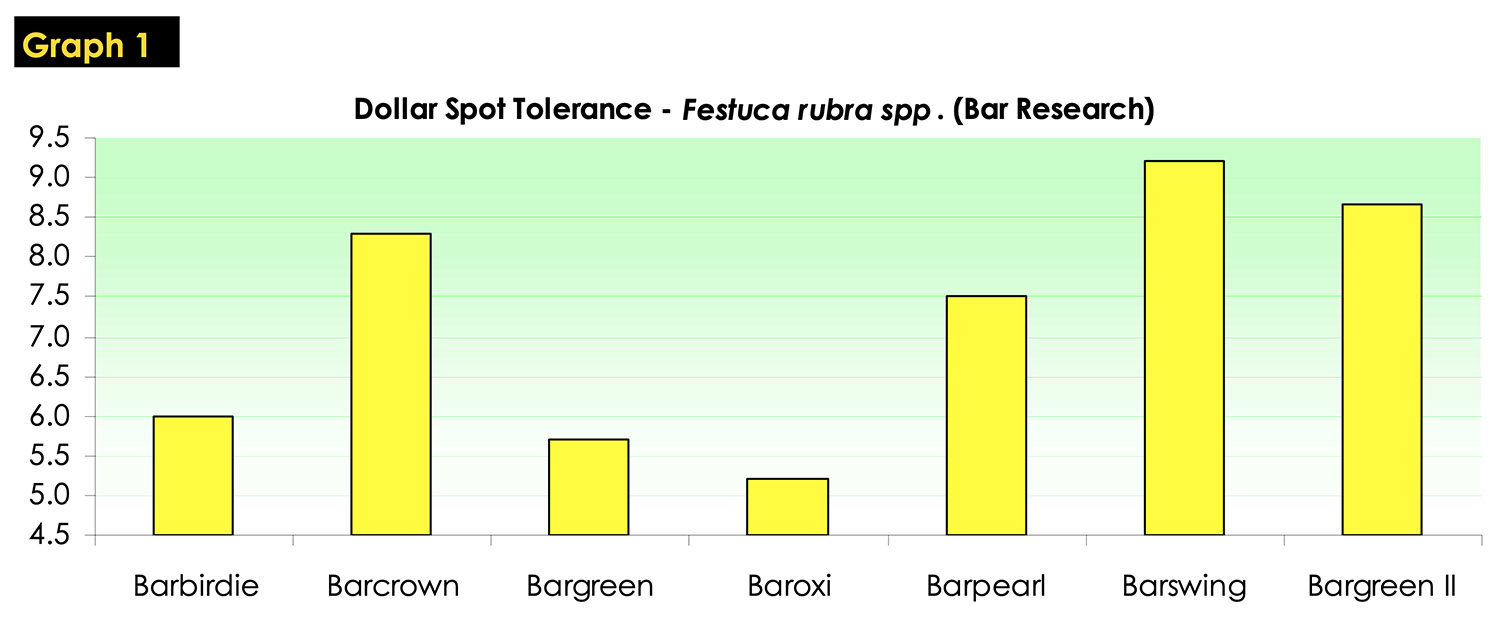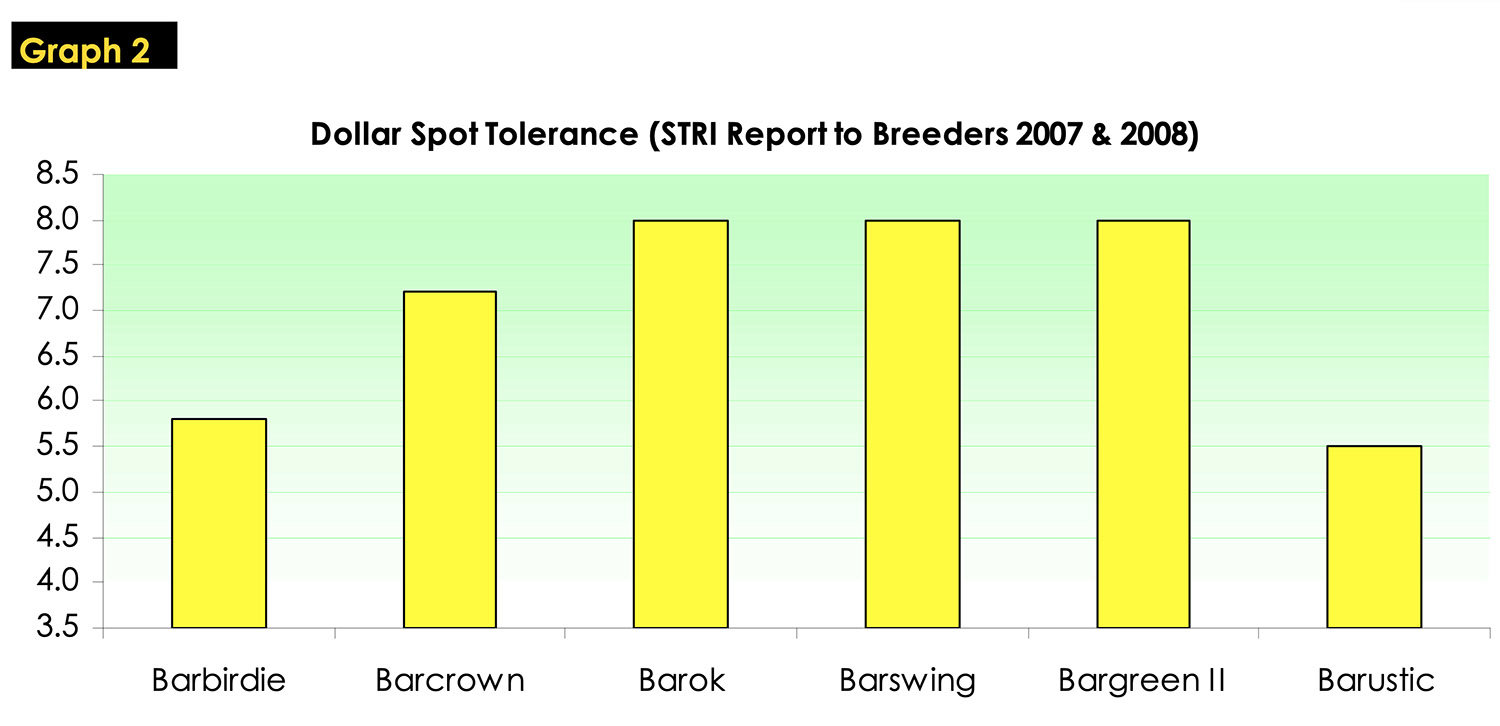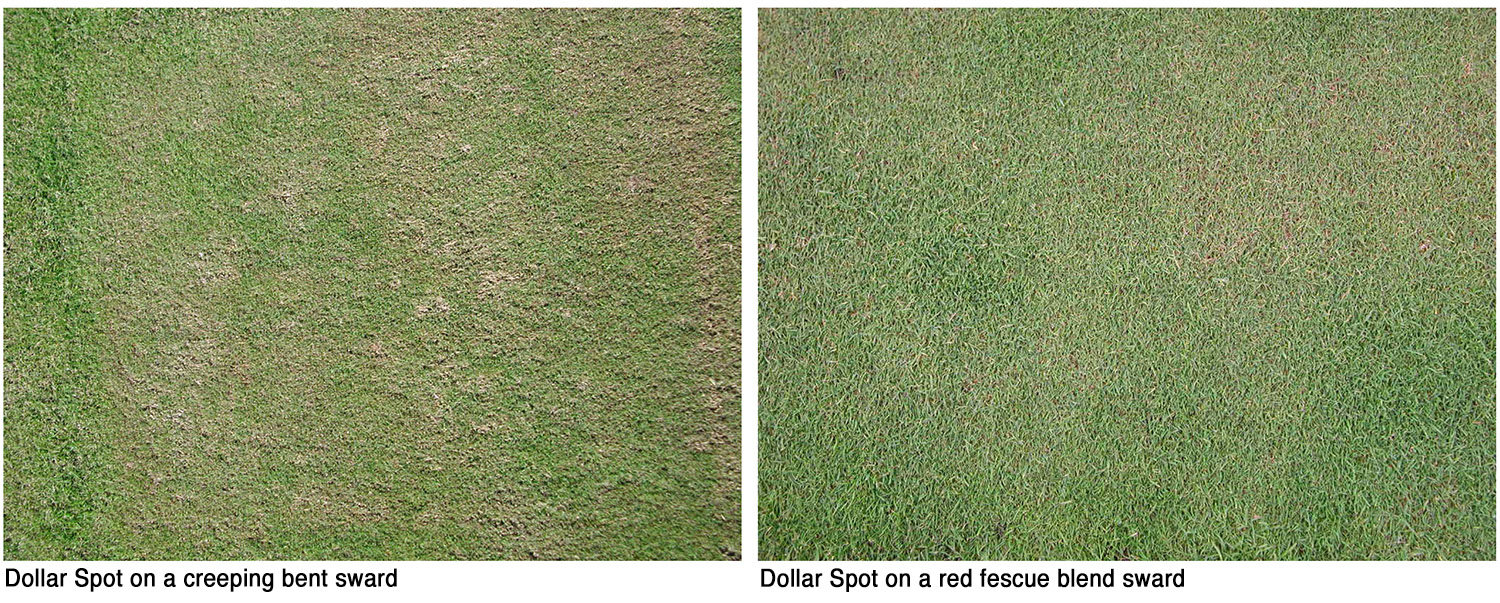Dollar Spot
Disease Background
Sclerotinia homoeocarpa
Dollar spot is a fungal disease which affects cool season grasses, including browntop bent (Agrostis capillaris), creeping bent (Agrostis stolonifera), red fescues (Festuca rubra spp.), smooth-stalked meadowgrass (Poa pratensis) and annual meadowgrass (Poa annua). Dollar spot is most prevalent during warm, humid conditions (prolonged wet foliage), particularly following on from a period of hot, dry conditions. Dollar spot incidence has also been recorded with night temperatures as low as 70C. The severity of the infection will depend upon the virulence of the fungus and the susceptibility of the grass plant (stress factors or improved tolerance).





